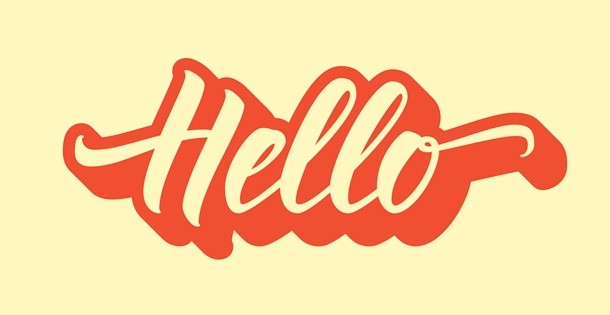The Fascinating History of the Hello Greeting
The Origins of Hello
The word “hello” originated in the late 1820s as a way to get someone’s attention or express surprise rather than as a standard greeting. People would say things like “Hello, what do you think you’re doing?” or “Hello, what have we here?”. It wasn’t until Thomas Edison popularized its use as a telephone greeting in the 1870s that “hello” took on its modern meaning.

Early Telephone Greetings
While Edison promoted “hello” as the preferred greeting for his telephones, Alexander Graham Bell preferred the nautical term “ahoy” which had been used for over a century on ships. Bell felt so strongly about “ahoy” that he continued using it for the rest of his life when answering phone calls. However, “hello” quickly caught on with the general public and centralized telephone operators were soon nicknamed “hello-girls” due to their frequent use of the greeting.
The Origins of “Hello” as a Misunderstanding
Some historians believe Edison first popularized “hello” almost by accident after mishearing someone say “hullo” into his prototype telephone. In 1877, he wrote to a colleague explaining his surprise that voices could be heard from 10-20 feet away with just a “Hello!” This early success helped cement “hello” as the new standard greeting for telephone conversations.
The True Love Behind the Telephone
An alternate theory once circulated that Bell’s inspiration for the telephone actually came from his efforts to communicate with his deaf girlfriend Margaret Hello. While a romantic tale, the facts show Bell was married to Mabel Hubbard and she sadly could not use the phone due to her deafness. The true origins of “hello” as the phone greeting lies with Edison and Bell’s preference for the nautical “ahoy”.
The Global Adoption of “Hello”
Over the past 150 years, the friendly one-word greeting “hello” has spread worldwide through the growth of telephone technology. Whether in colonial Africa, imperial Europe or modern America, “hello” became the recognizable sign that a telephone connection had been made. It allows users to identify themselves clearly in any language or dialect. Today, “hello” remains the universal introductory phone greeting across cultures and nationalities.
“Hello” in the Digital Age
As technology evolved, so too did the ways we say “hello”. From corded landlines to cordless phones to cellphones, the greeting adapted while retaining its familiarity. Now in the era of video calls and voice assistants, a “hello” still signals the start of a new communication. Whether answering a FaceTime call or initiating conversation with Alexa, “hello” maintains its role as the simple yet friendly way to indicate presence and begin an interaction in the digital realm.
The Persistent Popularity of “Hello”
Over two centuries since its coinage, the single friendly word “hello” remains one of the most globally recognized greetings worldwide. Coinciding with the rise of global telephone access, “hello” emerged as the optimized introductory phone greeting - brief yet comprehendible across languages and cultures. Its ease of use and legacy of welcoming millions of conversations have solidified “hello”’s role as one of humanity’s most ubiquitous greetings. From early telephone experiments to our voice-enabled present, saying “hello” maintains its role as a universal sign of human connection.
